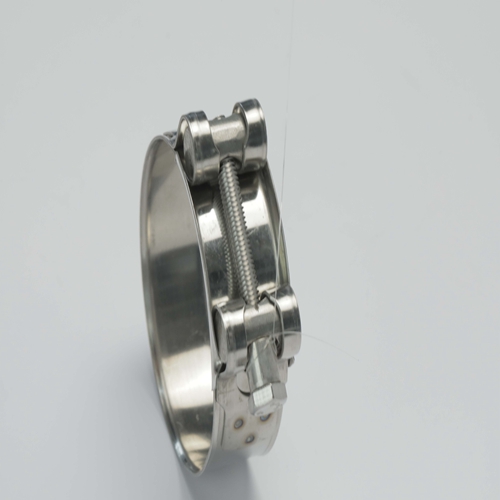- Phone:+86-17331948172 +86-0319-8862898
- E-mail: inquiry@puxingclamp.com
Nov . 25, 2024 23:00 Back to list
Micro Gear Hose Clamp Manufacturer for Quality Adjustable Solutions
The Evolution of Micro Gear Hose Clamp Manufacturing
In the realm of industrial components, the micro gear hose clamp stands out as an indispensable tool that plays a crucial role in various applications. From automotive engineering to household plumbing, these little devices ensure that hoses stay securely fastened. The establishment of specialized factories dedicated to the production of micro gear hose clamps has transformed the manufacturing landscape, introducing advancements in technology and efficiency.
Understanding Micro Gear Hose Clamps
Micro gear hose clamps are designed to provide a secure and adjustable fitting for hoses of varying sizes. They are constructed from durable materials like stainless steel, which offers resistance to corrosion and high temperatures. The clamps feature a worm gear mechanism that allows for precise tightening, making them ideal for applications with fluctuating pressures. Unlike traditional hose clamps, the micro gear design enables a more compact and lightweight solution without compromising strength.
The Importance of Quality Manufacturing
The manufacturing process of micro gear hose clamps is a precise science. Factories specializing in this area utilize advanced machinery and quality control measures to ensure the product meets the highest standards. The manufacturing process typically includes several stages material selection, cutting, shaping, assembly, and final inspection. Each stage requires skilled labor and high-grade technology to produce clamps that can withstand rigorous conditions.
Quality assurance is paramount in the manufacturing of micro gear hose clamps. Factories implement stringent quality control protocols, using tools like computerized testing equipment to assess the performance of their clamps under various conditions. This commitment to quality boosts consumer confidence, especially in industries where reliability is non-negotiable.
Technological Innovations in Manufacturing
Modern factories are adopting state-of-the-art technologies that streamline production processes. Automation plays a significant role in manufacturing micro gear hose clamps. Automated machines minimize human error and increase production speed, allowing manufacturers to meet high demand without sacrificing quality. Additionally, rotary machining and laser cutting techniques have revolutionized how components are fabricated, resulting in cuts that are both precise and efficient.
micro gear hose clamp factory

Industry 4.0 technologies, such as the Internet of Things (IoT), are also making their way into manufacturing plants. IoT solutions allow for real-time monitoring of production lines, facilitating responsive adjustments that optimize efficiency. Data analytics help factories forecast demand and manage inventory more effectively, ensuring that production aligns with market needs.
Sustainable Practices in Manufacturing
As environmental concerns continue to grow, factories are increasingly adopting sustainable practices in the production of micro gear hose clamps. This includes using recycled materials, minimizing waste, and implementing energy-efficient processes. By prioritizing sustainability, manufacturers not only reduce their carbon footprint but also appeal to environmentally conscious consumers.
Additionally, some factories are exploring biodegradable alternatives for less critical components, aiming to enhance their ecological footprint without compromising functionality. By embracing sustainability, the micro gear hose clamp industry is paving the way for a greener future while still meeting the demands of its diverse client base.
The Global Market and Future Directions
The global demand for micro gear hose clamps continues to rise due to their versatility and reliability. As industries expand, the need for high-quality components increases, propelling factory growth worldwide. Emerging markets, especially in Asia-Pacific regions, present significant opportunities for manufacturers looking to establish a presence in new territories.
Looking ahead, the future of micro gear hose clamp manufacturing will likely be shaped by ongoing technological advancements and a heightened focus on sustainability. The integration of artificial intelligence (AI) in production lines and supply chain management promises to further enhance efficiency and reduce costs.
Conclusion
The micro gear hose clamp manufacturing industry is a prime example of how traditional manufacturing can evolve to meet modern demands. Through quality assurance, technological innovations, and sustainable practices, factories are not only producing essential components but also adapting to the changing landscape of global industry. As we advance, the focus will undoubtedly remain on improving efficiency while ensuring that these small yet mighty components continue to provide the durability and reliability that consumers expect.
-
Large Stainless Steel Adjustable American Type Hose Clamp - Hebei Pux Alloy Technology Co., Ltd|Corrosion Resistance&High Breaking Torque
NewsJul.30,2025
-
Large Stainless Steel Adjustable American Type Hose Clamp - Hebei Pux Alloy Technology Co., Ltd
NewsJul.30,2025
-
Large Stainless Steel Adjustable American Type Hose Clamp - Hebei Pux Alloy Technology Co., Ltd|Corrosion Resistance&Industrial Applications
NewsJul.30,2025
-
Large Stainless Steel Adjustable American Type Hose Clamp-Hebei Pux Alloy Technology Co., Ltd|Corrosion Resistance, Adjustable Design
NewsJul.30,2025
-
Large Stainless Steel Adjustable American Type Hose Clamp - Hebei Pux Alloy Technology Co., Ltd. | High Breaking Torque & Corrosion Resistance
NewsJul.30,2025
-
Large Stainless Steel Adjustable American Type Hose Clamp - Hebei Pux Alloy Technology Co., Ltd
NewsJul.30,2025




